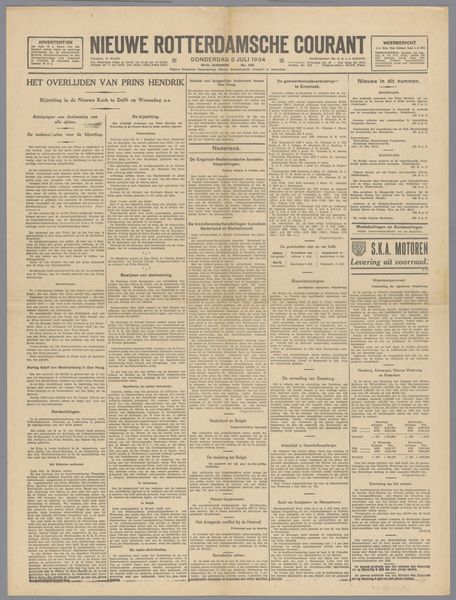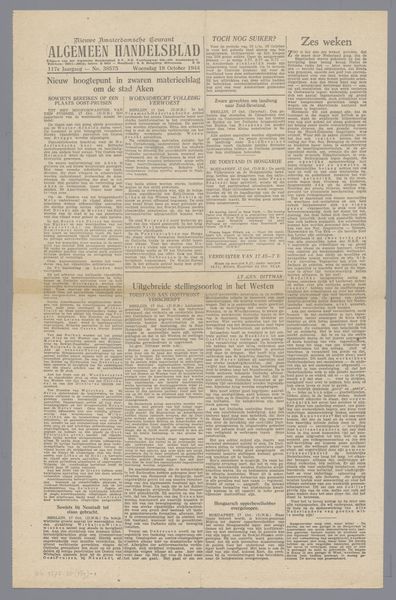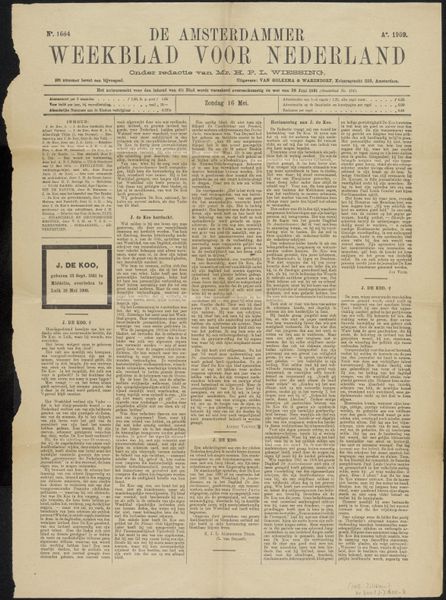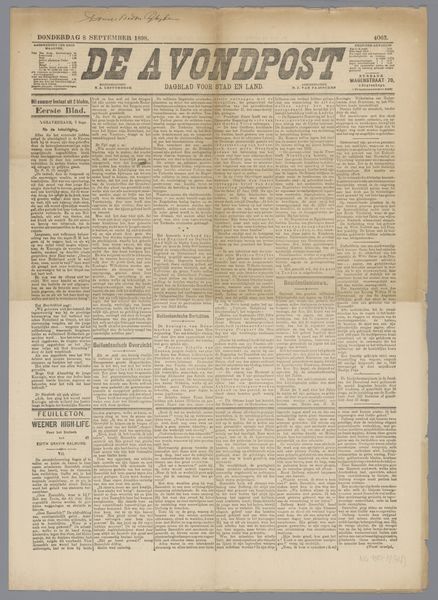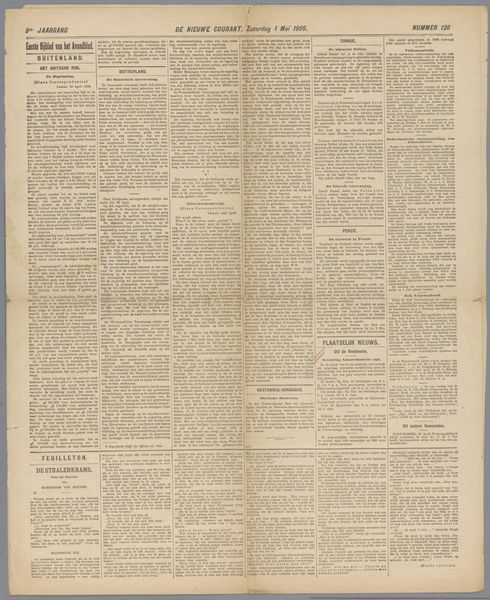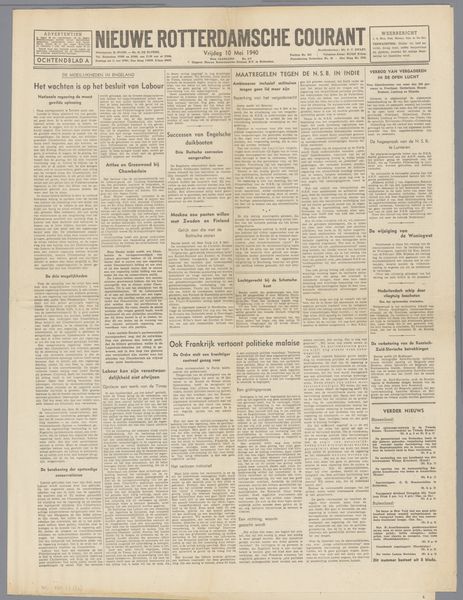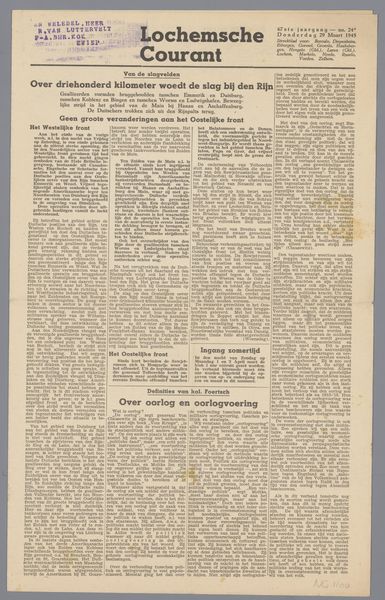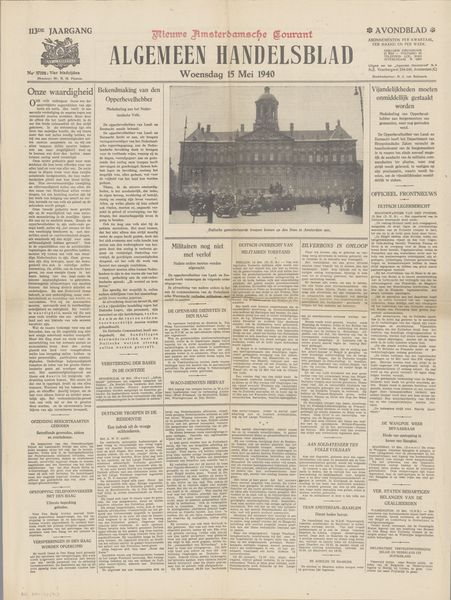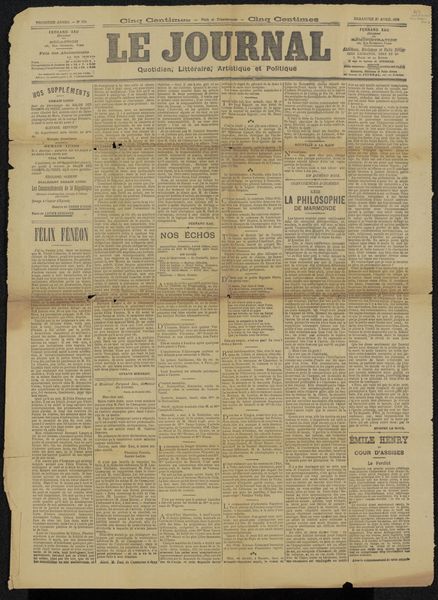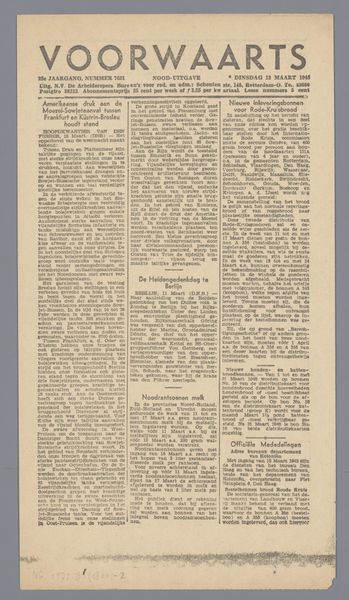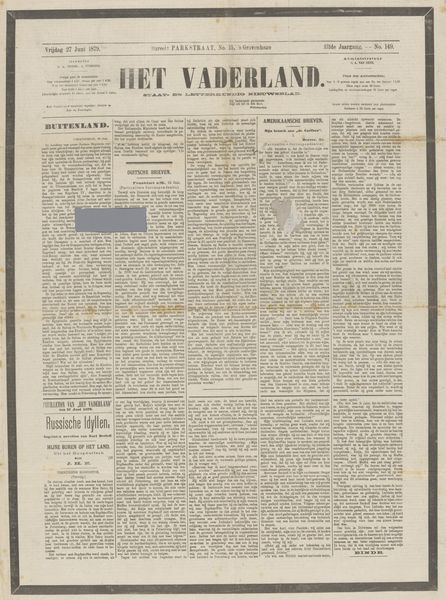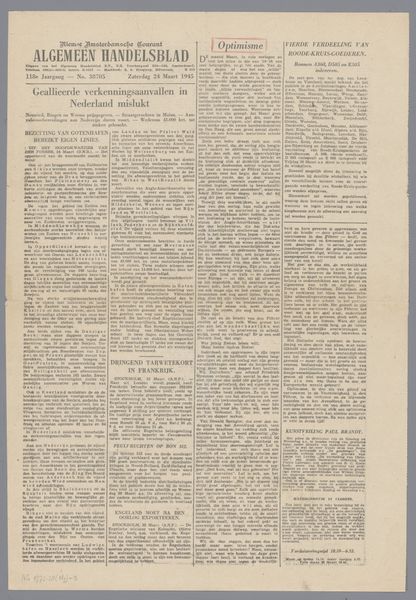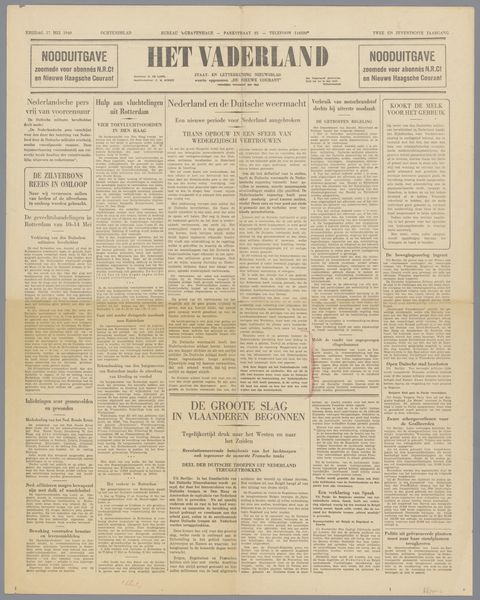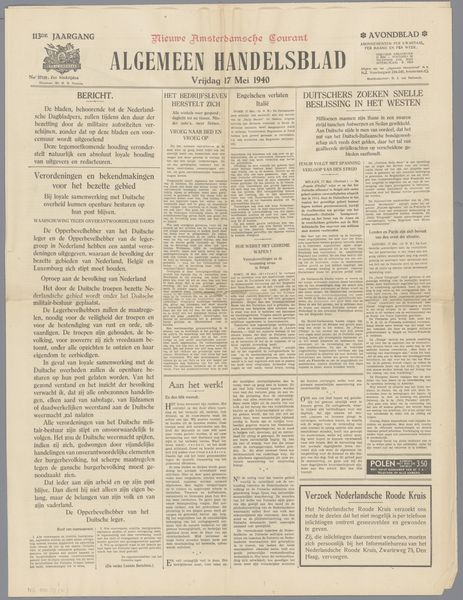
mixed-media, collage, print, textile, paper, photography
#
mixed-media
#
collage
#
narrative-art
# print
#
textile
#
paper
#
social-realism
#
photography
#
realism
Dimensions: height 59.5 cm, width 44 cm
Copyright: Rijks Museum: Open Domain
Editor: This is the "Nieuwe Rotterdamsche Courant," possibly from 1943. It’s a mixed-media collage incorporating print, paper, textile, and photography elements. It’s overwhelmingly textual, somber, and feels very much of a specific time. How do you interpret this work? Curator: For me, this image speaks volumes about the power dynamics inherent in the production and dissemination of information during wartime. The title announces "Nieuwe Rotterdamsche Courant," and its date says 31 December 1943, at the height of World War II. Note that its style is indicated to be social realism and realism. Editor: Yes, but it feels strange to label a newspaper a work of "social realism," as I was taught that art uses creative license for narrative. How are we to see that label when the picture just shows a newspaper? Curator: It's less about what's *on* the page literally and more about understanding how newspapers themselves functioned as powerful tools of propaganda and control, shaping public perception under totalitarian regimes. Consider this newspaper as an object deeply embedded in a specific sociopolitical context. Editor: So you're saying it *is* social realism, since its inherent narrative promoted political propaganda. That context of propaganda is like a conceptual lens that adds extra dimension to a regular paper. How might gender, race or politics fit in here? Curator: Absolutely. During wartime, the press played a crucial role in either reinforcing or challenging dominant ideologies related to identity, patriotism, and national unity. You might also research censorship policies and the role of journalists who resisted or collaborated. Examining who controlled the narrative becomes paramount, as does understanding whose voices were silenced. What do *you* make of its stark black-and-white aesthetic? Editor: It's definitely stark! But your ideas make me see a mundane newspaper as a powerful tool. This isn’t just paper and ink, but a loaded object—it becomes an artful statement when reframed by politics. Thank you! Curator: My pleasure.
Comments
No comments
Be the first to comment and join the conversation on the ultimate creative platform.
